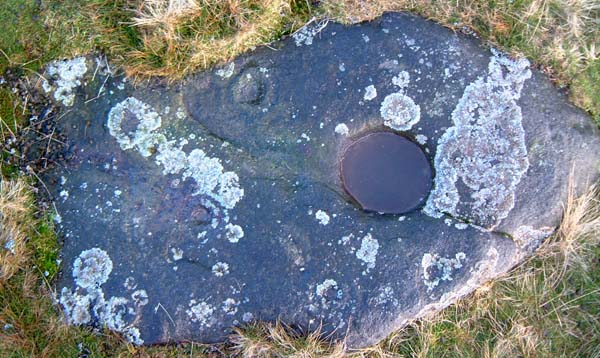Fitz made a very good choice of stone to seek. The front cover of the indispensable Laurie and Beckensall book has a photo of a glorious stone very similar to this. If I were them I’d have picked this one. It’s a dahza!
I’m stumped as to why the hill is called Eel hill though. Seems a bit peculiar, it’s not near the sea, or any rivers that look like they’d have eels in them.
It’s an especially complex motif for the area, and is also conspicuous in that it is the only one on the summit of the hill, whilst the slope on the way up had oodles of marked stones though none with the such a clear cut bowl. It nicely connects the cairns etc (on the slopes below) to the mysterious atmosphere of Osmond’s Gill . It’s a special stone marking a special place.





































